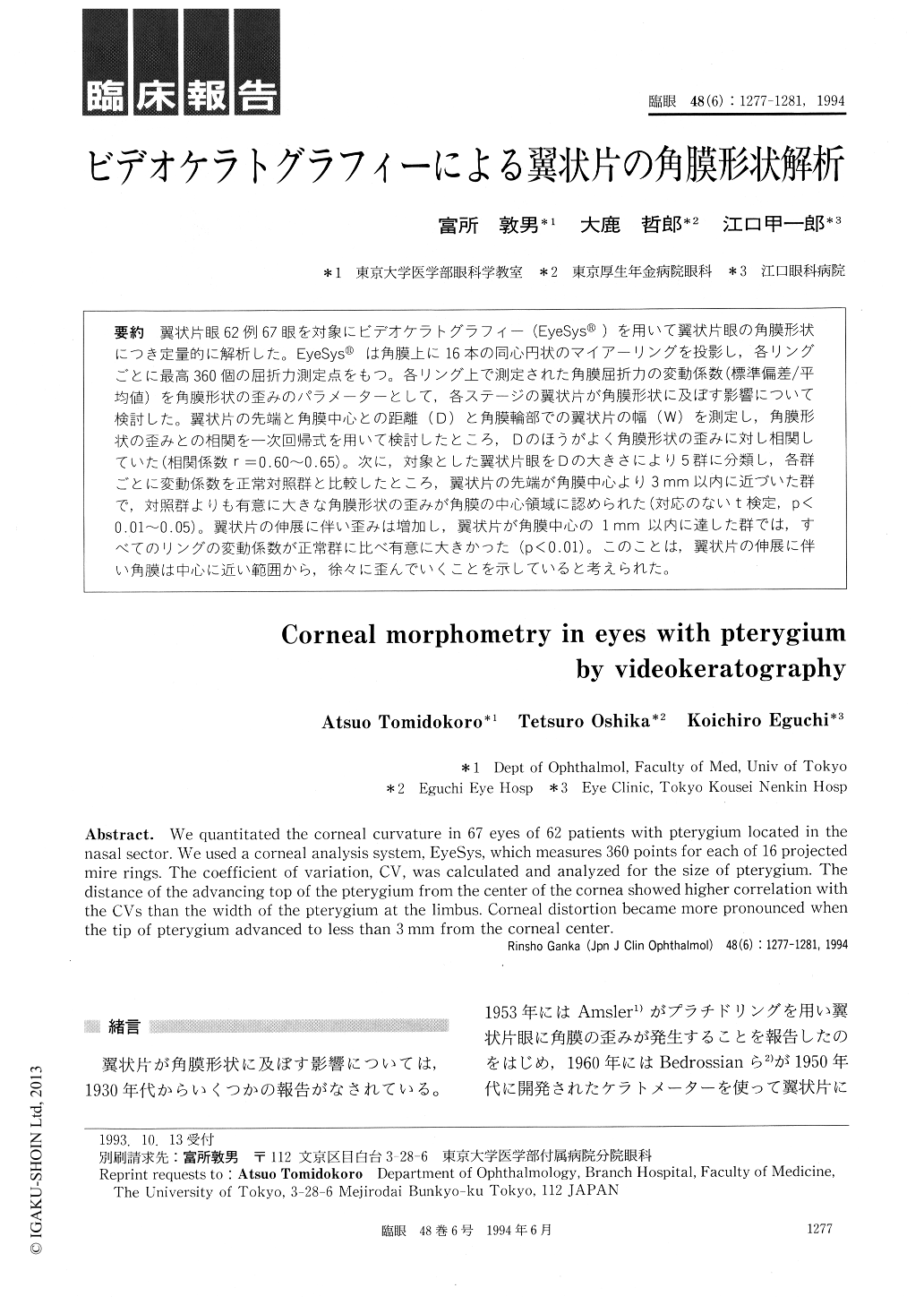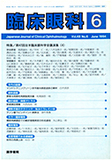Japanese
English
- 有料閲覧
- Abstract 文献概要
- 1ページ目 Look Inside
翼状片眼62例67眼を対象にビデオケラトグラフィー(EyeSys®)を用いて翼状片眼の角膜形状につき定量的に解析した。EyeSys®は角膜上に16本の同心円状のマイアーリングを投影し,各リングごとに最高360個の屈折力測定点をもつ。各リング上で測定された角膜屈折力の変動係数(標準偏差/平均値)を角膜形状の歪みのパラメーターとして,各ステージの翼状片が角膜形状に及ぼす影響について検討した。翼状片の先端と角膜中心との距離(D)と角膜輪部での翼状片の幅(W)を測定し,角膜形状の歪みとの相関を一次回帰式を用いて検討したところ,Dのほうがよく角膜形状の歪みに対し相関していた(相関係数r=0.60〜0.65)。次に,対象とした翼状片眼をDの大きさにより5群に分類し,各群ごとに変動係数を正常対照群と比較したところ,翼状片の先端が角膜中心より3mm以内に近づいた群で,対照群よりも有意に大きな角膜形状の歪みが角膜の中心領域に認められた(対応のないt検定,p<0.01〜0.05)。翼状片の伸展に伴い歪みは増加し,翼状片が角膜中心の1mm以内に達した群では,すべてのリングの変動係数が正常群に比べ有意に大きかった(p<0.01)。このことは,翼状片の伸展に伴い角膜は中心に近い範囲から,徐々に歪んでいくことを示していると考えられた。
We quantitated the corneal curvature in 67 eyes of 62 patients with pterygium located in the nasal sector. We used a corneal analysis system, EyeSys, which measures 360 points for each of 16 projected mire rings. The coefficient of variation, CV, was calculated and analyzed for the size of pterygium. The distance of the advancing top of the pterygium from the center of the cornea showed higher correlation with the CVs than the width of the pterygium at the limbus. Corneal distortion became more pronounced when the tip of pterygium advanced to less than 3 mm from the corneal center.

Copyright © 1994, Igaku-Shoin Ltd. All rights reserved.


